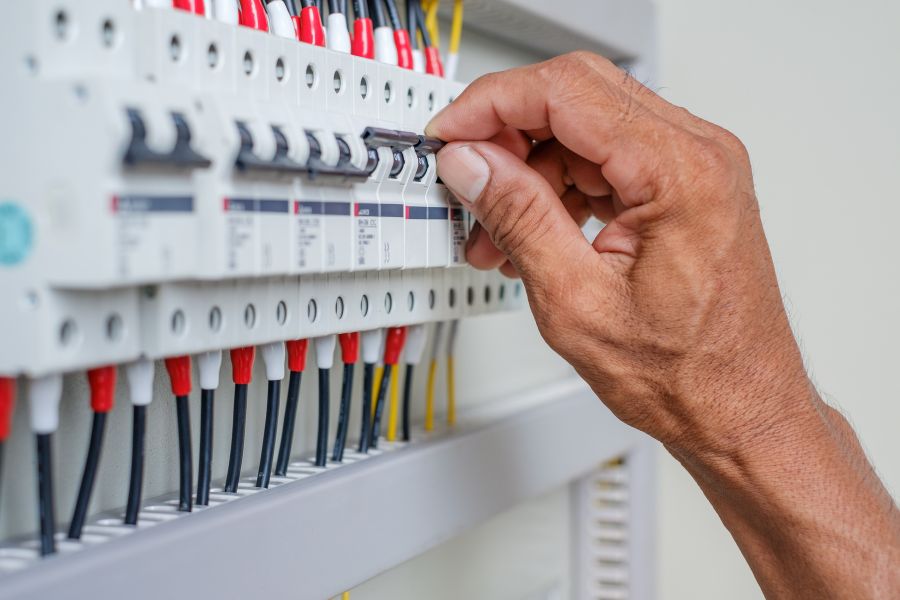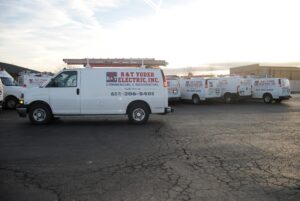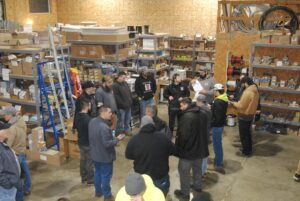
Behind every illuminated room, buzzing appliance, and charging device lies an unsung hero: the electric panel. Often tucked away in a corner of the basement, garage, or utility closet, this unassuming gray box is, in fact, the brain of your home’s electrical system. It distributes power, safeguards circuits, and ensures that your household appliances and electronics function smoothly.
However, when an electric panel is outdated, overloaded, or improperly installed, it transforms from a protective mechanism into a potential hazard. Faulty panels can cause power surges, flickering lights, and even electrical fires. Professional electric panel installation services ensure your home is equipped with a reliable, efficient, and future-proof power infrastructure.
Understanding the Role of the Electric Panel
The electric panel—often called a breaker box, service panel, or distribution board—serves as the central hub for your home’s electrical network. Its primary role is to receive electricity from the utility provider and allocate it across various circuits.
Key Functions of an Electric Panel:
- Power Distribution: Routes electricity to different areas and appliances in the home.
- Circuit Protection: Breakers trip when a circuit overloads, preventing electrical fires.
- Voltage Regulation: Maintains consistent power levels to protect sensitive electronics.
- System Expansion: Allows for additional circuits when upgrading appliances or adding new rooms.
Did You Know? Older panels often have fuse-based systems instead of modern circuit breakers, which are less efficient and more prone to hazards.
Signs You Need a New Electric Panel
Many homeowners overlook their electric panels until something goes wrong. Recognizing early warning signs can save you from costly damage and potential safety risks.
Indicators It’s Time for an Upgrade:
- Frequent Circuit Breaker Trips:
Circuit breakers are designed to trip when a circuit overloads. If this happens frequently, it suggests the panel is struggling to handle your home’s power demands. - Flickering or Dimming Lights:
Lights that dim or flicker when appliances turn on indicate an overloaded panel. - Burning Smell or Discoloration:
A faint burning odor or scorch marks around the panel are red flags that require immediate attention. - Outdated Panel (Over 20 Years Old):
Panels older than two decades may not comply with current electrical codes or handle modern appliances. - Use of Fuses Instead of Breakers:
Fuse-based panels are not only outdated but also less reliable than modern breaker systems. - Buzzing or Humming Sounds:
Electrical panels should operate silently. Unusual sounds often signal loose connections or damaged wiring.
The Electric Panel Installation Process: Step-by-Step Breakdown
Electric panel installation is a meticulous process that requires technical expertise, strict adherence to safety standards, and a methodical approach. Here’s how professionals execute the task:
1. Initial Assessment and Load Calculation
- Evaluate the home’s current and future electrical demands.
- Identify necessary upgrades, such as higher-capacity panels (e.g., upgrading from 100-amp to 200-amp service).
Example: Homes with EV chargers, hot tubs, and advanced HVAC systems often need higher-capacity panels.
2. Power Shutdown and Safety Precautions
- Turn off the main power supply to avoid electrical hazards.
- Confirm the absence of live currents using specialized testers.
Safety First: Electrical work without proper precautions can result in severe injuries or fatalities.
3. Panel Removal and Wiring Preparation
- Disconnect all existing wires and remove the old panel.
- Inspect wiring for damage or corrosion and replace as needed.
4. Installation of the New Electric Panel
- Mount the new panel securely to a wall or designated structure.
- Connect circuits to corresponding breakers, ensuring accurate labeling for easy identification.
Pro Tip: Clear, accurate labeling prevents confusion during future repairs or modifications.
5. Testing and Final Inspection
- Power up the new panel and test all circuits.
- Inspect for proper breaker operation, voltage stability, and adherence to local electrical codes.
Types of Electric Panels: Choosing the Right One
Not all panels are alike. The best choice depends on household size, electrical demand, and future needs.
- Main Breaker Panel
The central control center of a home’s electrical system. It includes a primary breaker that can shut down all power with a single switch.
Ideal For: Standard residential applications.
2. Main Lug Panel
Lacks a main breaker and is usually installed as a sub-panel. It relies on an upstream breaker for disconnection.
Ideal For: Detached garages, workshops, or outbuildings.
3. Sub-Panel
An auxiliary panel that branches off from the main breaker panel.
Ideal For: Home expansions, outdoor kitchens, or solar panel connections.
4. Smart Electrical Panel
Equipped with advanced features like energy monitoring, remote control, and automated load balancing.
Ideal For: Tech-savvy homeowners aiming to optimize energy consumption.
Fun Fact: Smart panels can integrate with solar energy systems to maximize renewable energy usage.
The Impact of an Efficient Electric Panel on Home Efficiency
A well-functioning electric panel doesn’t just prevent power outages—it also contributes to overall home efficiency.
🛠️ Key Benefits:
- Reduced Energy Waste: Balanced loads prevent energy loss.
- Enhanced Appliance Performance: Stable voltage extends the lifespan of electronic devices.
- Lower Utility Bills: Smart panels help identify energy-hungry appliances.
Did You Know? Upgrading from a 100-amp to a 200-amp panel can increase a home’s resale value, especially in older properties.
The Dangers of Outdated or Improperly Installed Panels
An electric panel is the gatekeeper of electrical safety. When compromised, it becomes a ticking time bomb.
Risks of Outdated Panels:
- Electrical Fires: Faulty wiring and overloaded circuits cause thousands of home fires annually.
- Equipment Damage: Power surges damage sensitive electronics like TVs and computers.
- Code Violations: Non-compliant panels may invalidate home insurance policies.
Historical Insight: Federal Pacific Electric (FPE) panels installed in homes between the 1950s and 1980s are notorious for malfunctioning and causing fires. Replacing these panels is crucial.
Electric Panel Installation for Modern Homes
Today’s homes have significantly higher power demands than those built just a few decades ago. Between smart devices, electric vehicles, and high-efficiency appliances, upgrading to a modern panel is often necessary.
Modern Considerations:
- Electric Vehicle Chargers: EVs require dedicated 240V circuits.
- Home Automation Systems: Smart homes benefit from panels with monitoring capabilities.
- Renewable Energy Integration: Solar power systems often need upgraded panels with battery storage compatibility.
Example: A homeowner adding solar panels and a Tesla Powerwall will need a panel upgrade to handle the additional current load.
Tips for Maintaining Your Electric Panel
Like any home system, electric panels require periodic maintenance to remain reliable.
- Inspect Annually: Look for rust, corrosion, or loose connections.
- Label Circuits Clearly: Ensure each breaker is labeled for quick troubleshooting.
- Test Breakers: Manually trip and reset breakers once a year to prevent stiffness.
- Monitor Power Surges: Install whole-house surge protectors to safeguard sensitive devices.
Pro Insight: Schedule a professional inspection every 3-5 years to catch potential issues early.
FAQ Section
1. How long does electric panel installation take?
Installation typically takes 4-8 hours. Complex setups or rewiring may extend the timeframe.
2. How much does it cost to install a new electric panel?
Costs vary based on panel capacity and complexity but generally range from $1,500 to $3,000.
3. Can I upgrade my electric panel myself?
No. Electric panel work requires licensed electricians due to the risk of fire, electrocution, and code violations.
4. How often should I upgrade my panel?
Panels last 25-40 years. Upgrade sooner if adding high-demand devices or if the panel shows signs of wear.
5. What’s the difference between a fuse box and a breaker panel?
Fuse boxes use replaceable fuses that burn out when overloaded, while breaker panels use resettable switches for better efficiency and safety.
Electric panels may be hidden behind closed doors, but their importance is undeniable. A modern, professionally installed panel ensures safe, efficient, and reliable power delivery for years to come.
Don’t wait until flickering lights or tripped breakers become daily frustrations. Contact our expert team today to schedule your electric panel installation. Power your home safely, efficiently, and with confidence.







